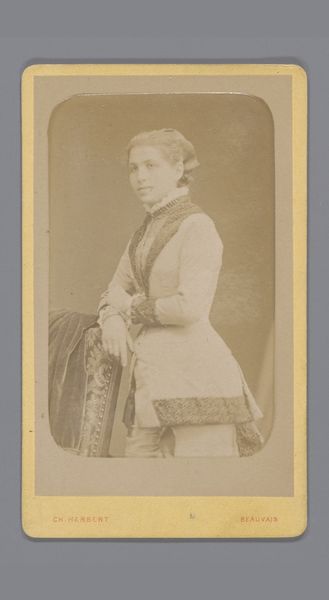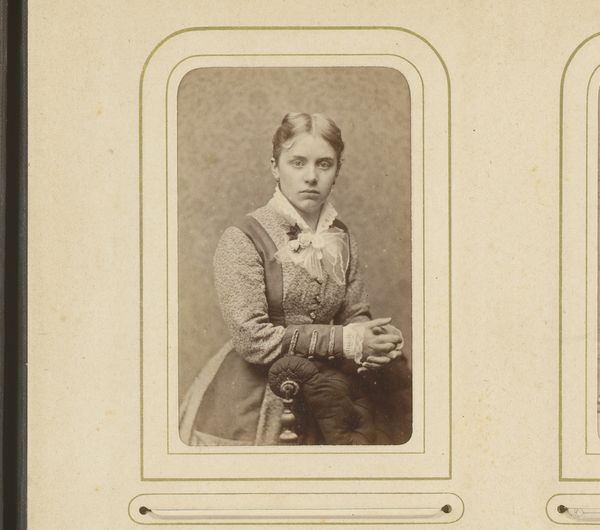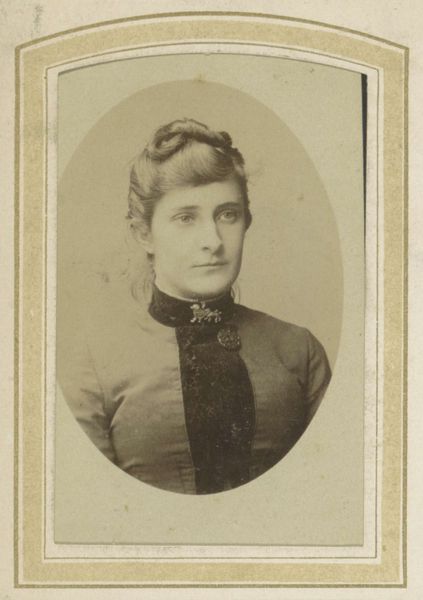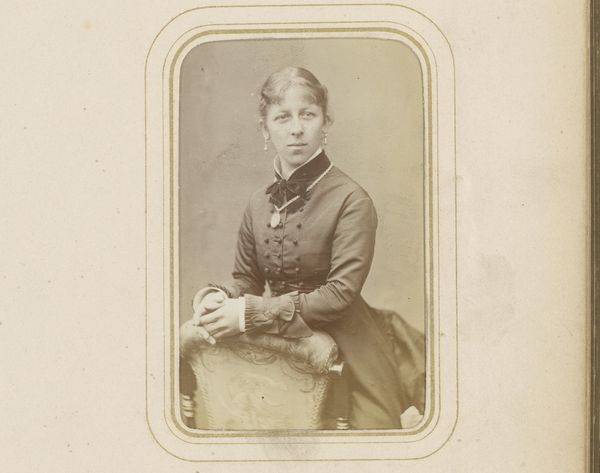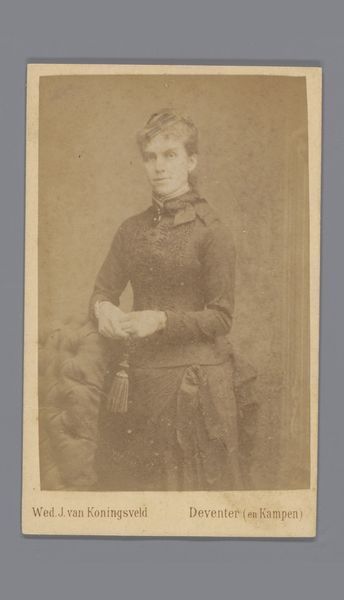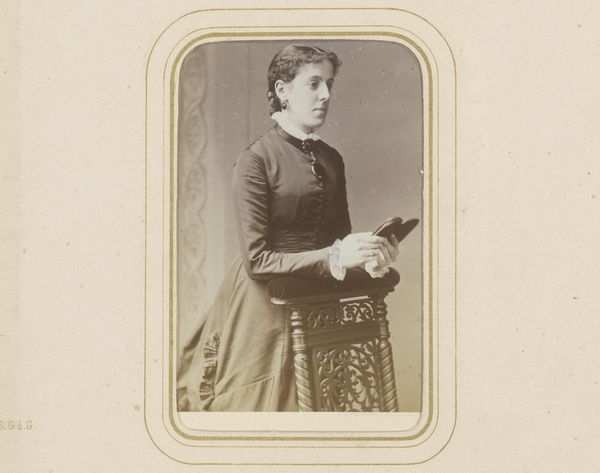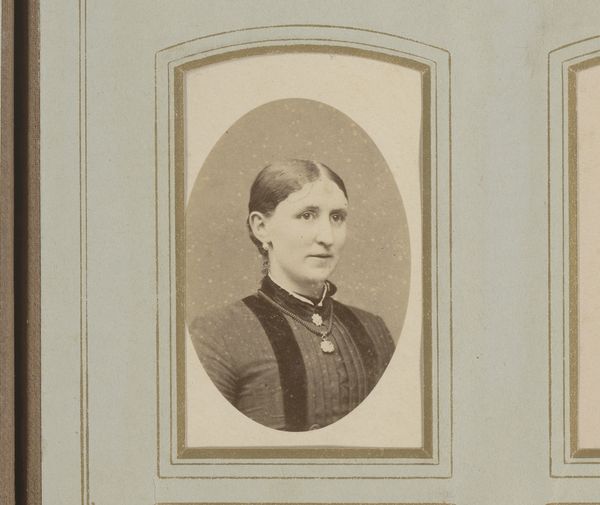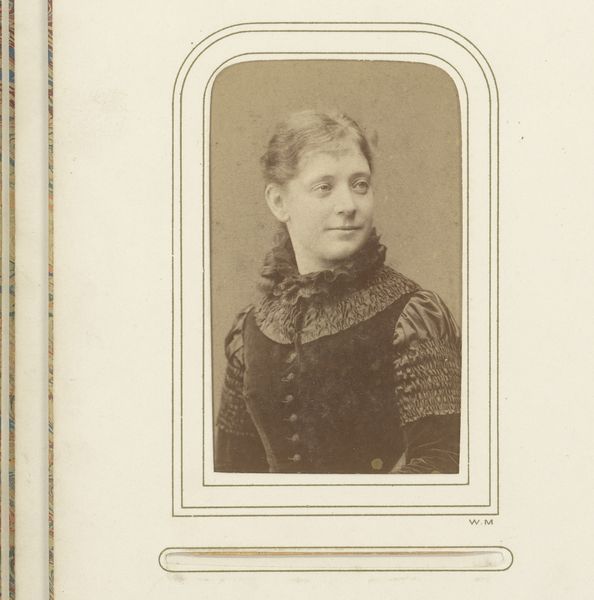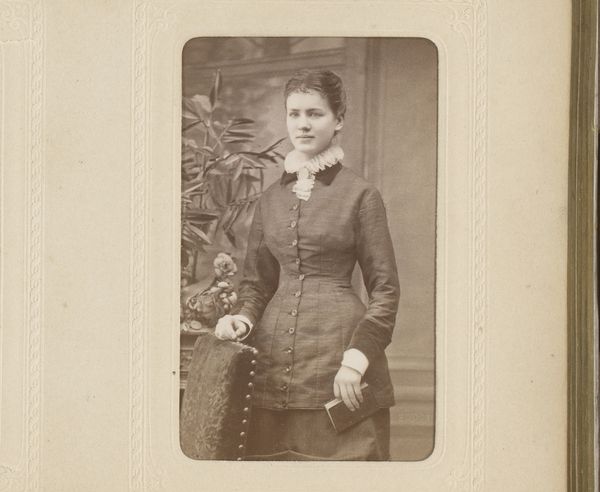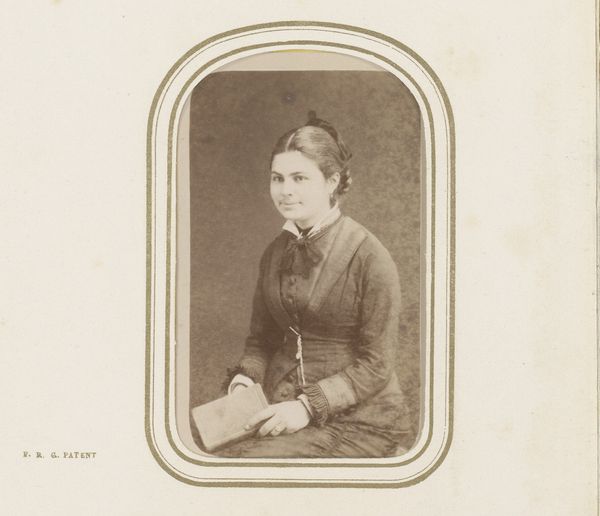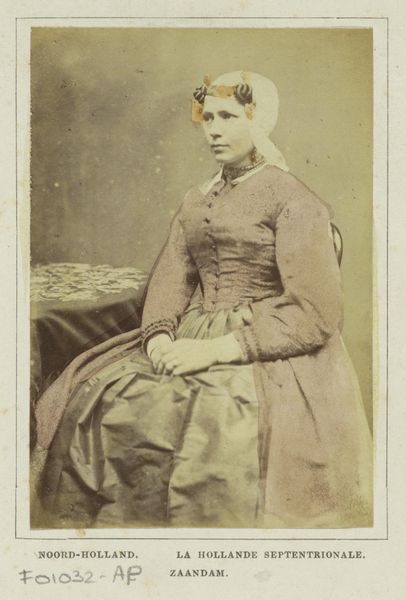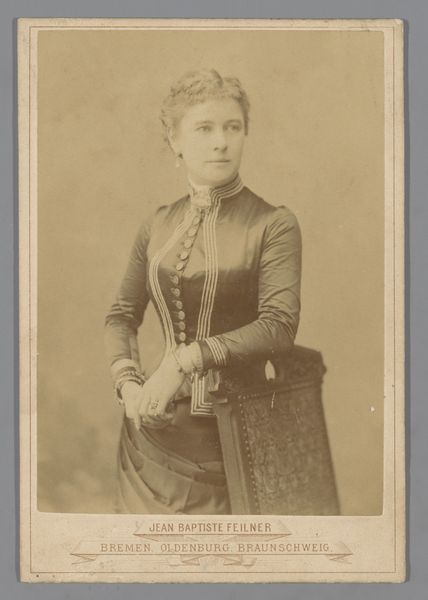
Portret van een staande jonge vrouw, leunend op de leuning van een fauteuil 1860 - 1900
0:00
0:00
photography, albumen-print
#
portrait
#
photography
#
historical photography
#
19th century
#
genre-painting
#
albumen-print
Dimensions: height 83 mm, width 51 mm
Copyright: Rijks Museum: Open Domain
Curator: Standing before us is a turn-of-the-century albumen print, dating roughly from 1860 to 1900. Its title translates to "Portrait of a Standing Young Woman Leaning on the Armrest of an Armchair." Editor: First impression? Quiet dignity. She's posed, obviously, but there's a lack of ostentation, you know? Almost…humble. And I'm drawn to the sepia tones. It adds this nostalgic air that makes you wonder about her untold stories. Curator: It's fascinating to consider how photography was shaping social perceptions and ideals during this time. These portraits, often commissioned by middle-class families, served as symbols of status, capturing a moment in time for posterity. Editor: Status, sure. But I also think about vulnerability. To sit still that long, expose yourself—your hopes, your insecurities—to a camera’s unblinking eye... it takes courage. I wonder if she felt like she was playing a role, or if this really was a glimpse of her soul? The lighting creates a delicate ambiance with such subtle tonal values. Curator: Albumen prints were highly valued for their fine detail and rich tonal range. The process itself, using egg whites to bind the photographic chemicals to the paper, was quite complex, further adding to their artistic appeal and value. And note the subtle details of her dress—the meticulous tailoring reflecting the socio-economic status she inhabits. Editor: The subtle textures—the velvet of the chair, the fabric of her dress—they’re so palpable you can almost feel them. It's funny, though, isn't it? The 'genre painting' tag they give it seems so… sterile. I see more than just a "genre" here. Curator: True, and we do sometimes categorize based on function. We understand these images not merely as aesthetic objects, but as integral to the shaping of identity, family narrative, and even historical record, thus illuminating the politics of visual representation. Editor: Identity indeed! She gazes directly forward, her expression serious. What secrets might she keep? What kind of world was she striding toward? The print is modest in size and is beautifully displayed as part of a photo album, with its layered frame adding more depth. The photographer captured something far more powerful than I initially thought. Curator: It prompts us to consider the wider context of portraiture during a period undergoing dramatic societal change, doesn’t it? Editor: It certainly does. Makes one wonder about their entire life’s journey!
Comments
No comments
Be the first to comment and join the conversation on the ultimate creative platform.
